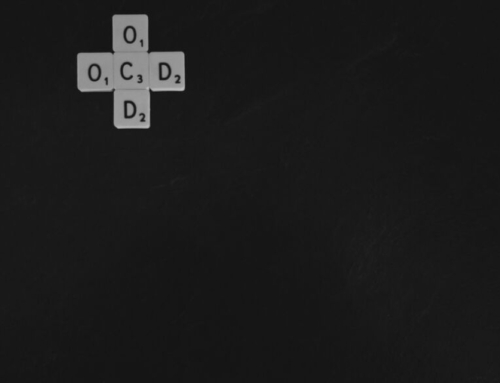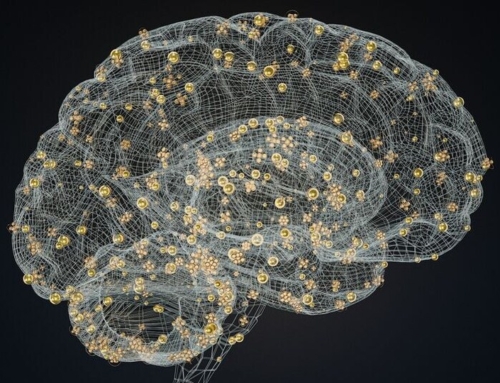 This article continues a series of three articles aimed at educating parents on ADHD. In Part 1, we explored some of the issues associated with accurately diagnosing ADHD. We also explained some of the theory behind what we believe is happening with people who have ADHD, as well as some of the latest research.
This article continues a series of three articles aimed at educating parents on ADHD. In Part 1, we explored some of the issues associated with accurately diagnosing ADHD. We also explained some of the theory behind what we believe is happening with people who have ADHD, as well as some of the latest research.
Today in Part 2, we’ll focus on providing characteristics and insights related to children who have ADHD and conclude by discussing the general overall process on how clinicians arrive at a diagnosis.
What does ADHD actually look like in everyday life?
Edward Hallowell, M.D. and John Ratey, M.D. are two of the foremost experts on ADHD. In their bookDriven to Distraction, Hallowell and Ratey listed 20 common symptoms associated with ADHD:
- A sense of underachievement, of not meeting one’s goals (regardless of how much one has accomplished)
- Difficulty getting organized
- Chronic procrastination or trouble getting started
- Many projects going simultaneously; trouble with follow-through
- Tendency to say what comes to mind without necessarily considering the timing or appropriateness of the remark
- An ongoing search for high stimulation
- A tendency to be easily bored
- Easy distractibility, trouble focusing attention, tendency to tune out or drift away in the middle of a page or a conversation, often coupled with an ability to focus at times
- Often creative, intuitive, highly intelligent
- Trouble going through established channels, following proper procedure
- Impatient; low tolerance for frustration
- Impulsive, either verbally or in action, as in impulsive spending of money, changing plans, enacting new schemes or career plans, and the like
- Tendency to worry needlessly, endlessly; tendency to scan the horizon looking for something to worry about, alternating with inattention to or disregard for actual dangers
- Sense of impending doom, insecurity, alternating with high risk-taking
- Depression, especially when disengaged from a project
- Restlessness
- Tendency toward addictive behavior
- Chronic problems with self-esteem
- Inaccurate self-observation
- Family history of ADD, manic-depressive illness, depression, substance abuse, or other disorders of impulse control or mood
Other Tendencies, Common Characteristics, and Insights …
 Those are good descriptions. I’ll add a bit more and explain what a child with ADHD might look like. Keep in mind that every child is different. Their likes, dislikes, tastes, and overall personalities will be unique. No two kids with ADHD will look alike.
Those are good descriptions. I’ll add a bit more and explain what a child with ADHD might look like. Keep in mind that every child is different. Their likes, dislikes, tastes, and overall personalities will be unique. No two kids with ADHD will look alike.
Although it’s not true for every child, here are some overall tendencies and trends that are often seen in children who have ADHD:
- A lot of people with ADHD actually have extremely high IQ’s. ADHD is a matter offocus — not a matter of intelligence.
- You may not think that they are paying attention, but kids with ADHD can surprise you. Though it may not appear so, a lot of people with ADHD tend to notice and remember a great deal of what they see and hear. Some have fantastic recall memory and are able to remember even the tiniest details. Some may even have a photographic memory and be able to remember entire conversations.
- They are often quite energetic. If these kids were to be a Disney character, they’d be Tigger. Young kids especially regularly fidget, squirm, and always seem to be in motion.
- These kids will tend to have a very hard time staying focused when even the smallest distractions occur. It could be visual distractions (like a bright shirt, someone’s hair not being combed, etc.), an auditory one (like when someone’s stomach growls, the sound of a pencil being sharpened, etc.), or even smells.
- These children often have great difficulty playing quietly (for example, if boys enjoy playing with toy cars, they may find it nearly impossible to not make car noises and to not fly them all over the room).
- They have an insatiable hunger for stimulation. They’re the kinds of kids who if they have a radio or the TV remote, may be constantly flipping channels or changing stations.
- In addition, these kids also have an insatiable need and deep craving for structure (as they basically have little internal structure/boundaries). Though they may hate and rebel against rules, they also like and do well with strict rules.
- Children with ADHD are frequently easily bored in class. Because many are quite intelligent, they will often be the “know it all” in class. They can be quick to blurt out answers and jump into discussions.
- These kids tend to have a great deal of difficulty being able to follow through on things, as they’ll tend to get distracted by something else. Chores are often forgotten.
- They often don’t finish projects and tend to have an extremely hard time getting started. Homework may take them hours, as they have extreme difficulty staying on task and completing tasks. That doesn’t mean that they don’t know the information, as they can often frustrate their teachers by acing tests.
- Disorganization is a way of life for them. They will frequently lose things. Their rooms and their living space are commonly a mess. It’s not unusual to see dirty clothes all over the floor or the house, even after you just asked them to put them away for the thousandth time. Shoes, keys, wallets, etc. may be left around the house, just dropped wherever.
- They can be quite impulsive and will take risks. These kids may be accident prone because their inhibitions just aren’t there. When dared, they often have a real hard time saying “No.”
- Socially, they tend to struggle. It’s not uncommon for peers their age to reject them due to their immaturity. It’s common for them to have troubles relating to their birth cohort. As a result, they may hang out with kids much younger than them or much older than them. They may engage in playing the same games as younger kids or want to engage in discussions with those older than them.
- These children are generally highly attuned to their environments. While they are excellent at picking up non-verbal signals from others, they will frequently misread and misinterpret them. They have difficulty figuring out others’ intentions and how others actually feel about them. Because they often misread the social cues from others, they will tend to have problems with peers and can frequently become quite lonely.
- Creativity is quite common. Many of these kids can be very artistic. So, if they are bored, teachers will often see doodling, drawing, or pictures all over their papers.
- Some are naturally kinesthetic (hands-on) and be drawn to things such as robotics or woodworking, auto mechanic work, and so on. Note that just because a child is a Kinesthetic Learner, doesn’t automatically mean they have ADHD.
- Many are also drawn into athletics and especially into high intensity, high stimulus, fast action sports such as football, hockey, basketball, soccer, and so on. Team sports also have structure, as there are definite rules. They can often be drawn to dangerous activities because of the thrill involved. They will be the type to go cliff diving, skydiving, etc.
- Another thing that’s routinely seen is for these kids to be drawn towards fantasy stories, mythology, science fiction, comic books, anime, video games, and the like. Why is that? Why would these kids gravitate towards things like Star Trek, Pokemon, Harry Potter, Lord of the Rings, Marvel Comics, etc.? Well, it’s because these stories are both highly engaging (stimulating) and they all have a well designed internal structure. There are entire complex worlds and universes associated with stories and games with definite rules and standards under which the universes created in these stories operate.
- Not only do kids who have ADHD get easily distracted, they can also become HYPERFOCUSED on things as well. If they find something highly stimulating/engaging (interesting) that gives them structure, they can get virtually lost in it. This is why it may be easy to startle these kids (for example, a 13-year-old boy playing an adventure video game who’s totally oblivious to his mom’s presence until she puts her hand on his shoulder and scares him).
- One other important and often not well known aspect about ADHD is that people who have it tend to experience time differently. Whereas most people experience time in a straight hourly progression, a child with ADHD tends to be thinking about and experiencing events from the past, the present, and associated with the future simultaneously. This is why in a classroom setting they may get answers wrong, as they have a tendency to listen for a few seconds, assume they understand a concept correctly, and then in their minds jump ahead to the next step or become focused somewhere else.
- Substance abuse issues can be quite prevalent. This is probably not only due to their ongoing search for high stimulus, but also many clinicians believe that these kids are unconsciously trying to medicate themselves in order to address their issues.
- These children are typically poor money managers. They have a tendency towards impulsive spending. Money often burns a hole in their pockets.
- Stealing is frequently seen with these kids. This is not only due to the thrill associated with stealing and their overall tendency towards making impulsive decisions, but also because it’s also quite common for children who have ADHD to also have Conduct Disorder, Bipolar Disorder, and other disorders which may influence their behavior.
- Kids who have ADHD are also at higher risk to join gangs. Gangs can be very attractive because it provides them high stimulation and structure.
Landing on a Diagnosis
All of that said, it’s important to note that there is no one single specific or true definitive test for ADHD at this point.
![]() How in the world does anybody get diagnosed with ADHD, then? How does that generally happen?
How in the world does anybody get diagnosed with ADHD, then? How does that generally happen?
As I said earlier, especially in today’s society, getting a definitive diagnosis can be a bit tricky. Generally speaking, a professional working with your family would be taking a look at the entire picture and also looking to eliminate all of the possible “False ADHD Factors” that I mentioned earlier as well as other possible causes. These professionals can include psychiatrists, medical doctors, psychologists, mental health counselors, social workers, and nurse practitioners, to name a few.
Clinicians will FIRST look at your child’s symptoms by looking at the established criteria list for ADHD found in the DSM-5. In addition to simply looking for the above symptoms, there are other things that clinicians tend to look at:
Age of Onset
At least six of the above symptoms are present before the age of 12. I will say that generally, kids start being diagnosed around 1st or 2nd grade (7 or 8 years old). Before that point, it’s hard to tell the difference between normal toddler and Preschool-Kindergarten behaviors and true ADHD.
Pervasiveness
 It’s important to understand that these symptoms tend to be pretty much pervasive. They tend occur all the time everywhere, no matter where they are (home, at school, and in the community). Symptoms will be consistently present for a period of at least six months in a way that negatively impacts social, academic, and/or occupational activities.
It’s important to understand that these symptoms tend to be pretty much pervasive. They tend occur all the time everywhere, no matter where they are (home, at school, and in the community). Symptoms will be consistently present for a period of at least six months in a way that negatively impacts social, academic, and/or occupational activities.
That’s why school psychologists, doctors, and clinicians generally send assessment forms (such as the Vanderbilt Assessment Scale) to parents, teachers, and even community members alike when they’re evaluating a child for possible ADHD. That way, they can see how they behave in different environments.
Family History
Has anyone in your family ever been diagnosed with ADD or ADHD? If so, odds are high that your child will have it as well, as it appears it’s a genetically inherited trait.
Comorbidity
If someone has ADHD, it’s very common for them to have other disorders as well. Disorders that commonly are seen in conjunction with ADHD include:
- Anxiety Disorders
- Bipolar Disorder
- Obsessive-Compulsive Disorder
- Mood Disorders
- Learning Disorders
- Oppositional Defiant Disorder
- Conduct Disorder
- Antisocial Personality Disorder
- Substance Abuse Disorders
That’s why it takes a professional to help sort all this out (where exactly ADHD ends and another diagnosis begins). They appear to be genetically linked and inherited, so if someone in your family has been diagnosed with one of these disorders, it is entirely possible ADHD may be present.
Migraines
One interesting question you may be asked is, “Is there a family history of migraines?” If so, research is showing that it’s possible that a mutation of the MTHFR gene may be present in your family. That genetic mutation may be linked to ADHD, migraines, depression, miscarriages, and more.
Coffee and Caffeine
Remember how I mentioned earlier that the brains of children with ADHD operate differently than those without it? That’s certainly true with caffeine. While caffeine will wire and wake the typical child and adult up … it has the exact OPPOSITE effect on people with ADHD.
Bob Brown, the psychologist I mentioned earlier, told me that if he drinks a cup of coffee before he drives, he’s at high risk for falling asleep. I proposed this as a possible test for ADHD with a psychiatrist whom I used to work with and his response was, “Yeah, that would work.” So, if you’re thinking that your child may have ADHD, I humbly suggest slipping your child a bit of coffee, Coca Cola, Mountain Dew, Monster Drink, etc. Don’t tell them what you’re doing. That’ll spoil the test. Just quietly see what happens.
*Note and Discussion on Medications
Medications such as Adderall, Ritalin, Concerta, and others can be incredibly useful and powerful management tools for the person who has ADHD. Though they can help with focus and the ability to stay on task (particularly in class), some people have the mistaken notion that they can “fix” all the problems associated with it.
Medications are an important tool (and a good one) for many who have ADHD, but understand that they are not a “cure all.” In helping people better understand the function and limits of medications, we can liken it to building a house. If I were to ask you to build a house and only gave you a hammer, could you do it? Sure, you could perhaps pound some screws in with your hammer, but how about concrete work … or completing the electrical wiring … or the drywall? You see the point.
If you’re seriously considering medication, then a thorough medical evaluation and ongoing monitoring by a psychiatrist, physician, nurse practitioner, or other such professional is warranted. In addition to medications though, a professional like a well-trained Christian clinician can help provide you and your youngster with other important tools to manage and effectively live with ADHD as well.
Conclusion
It’s my hope that through these articles, you’ve been able to gain an appreciation for some of the difficulties associated with accurately diagnosing ADHD in today’s culture. Additionally, I also hope that parents reading these will be better equipped to help accurately identify ADHD and to better understand and assist their children who may have it.
If your child is struggling and you suspect that they may have ADHD, understand as well that it’s likely that professional assistance will be required. A trained Christian clinician can certainly help provide that kind of support. The next article (Part 3 of this series) will conclude our discussion of ADHD with teaching tips to help you support your child’s education.
“Happy,” courtesy of khamkhor, pixabay.com, CC0 License; “Paint with me,” courtesy of rawpixel.com, unsplash.com, CC0 License; “Twirl,” courtesy of Caleb Woods, unsplash.com, CC0 License; “Smug,” courtesy of vborodinova, unsplash.com, CC0 License
[todd-webb-article-profile]









